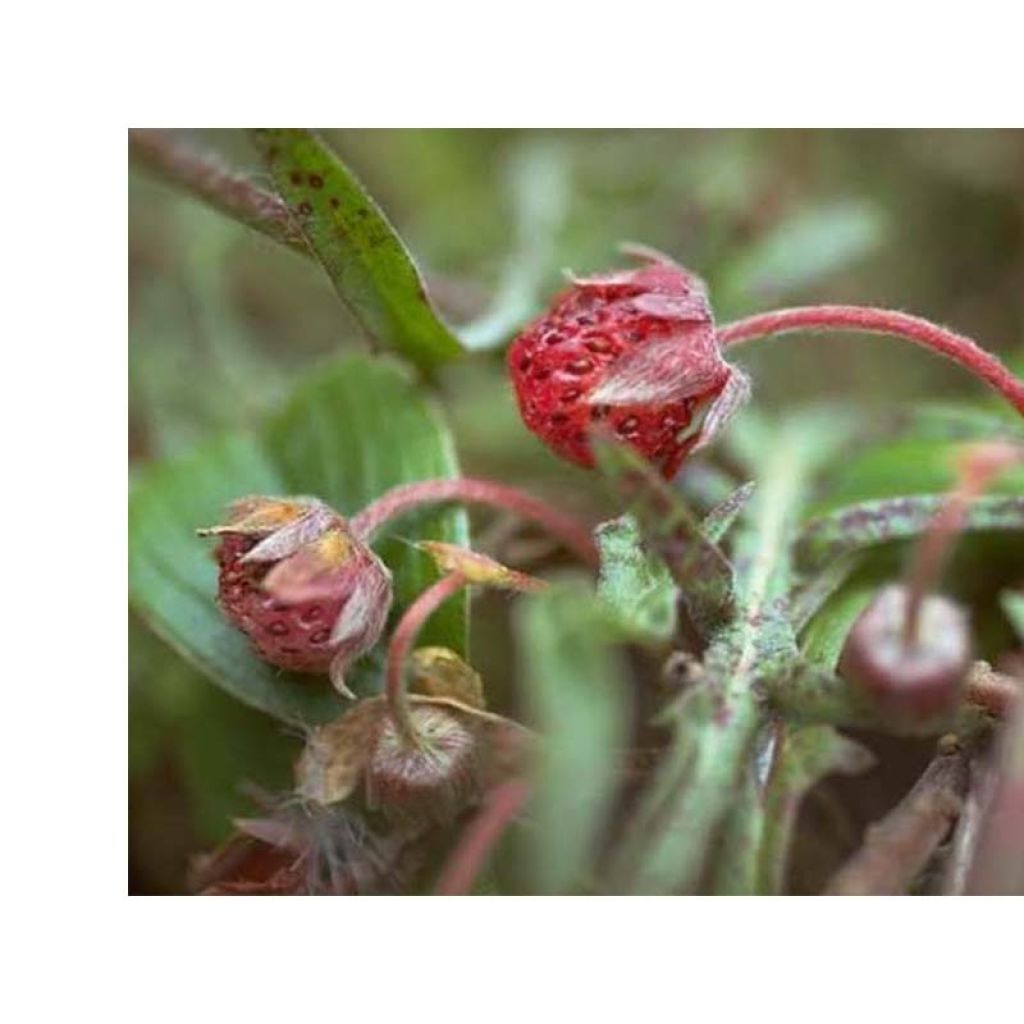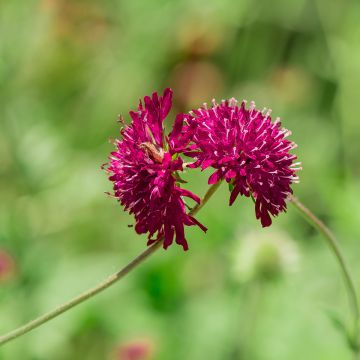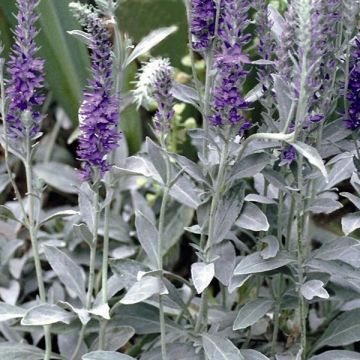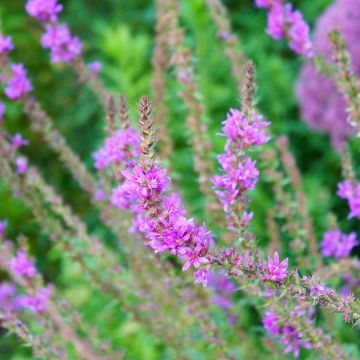

Fragaria chiloensis


Fragaria chiloensis
Fragaria chiloensis
Fragaria chiloensis
Beach Strawberry, Chilean Strawberry, Coastal Strawberry
This item cannot be shipped to the selected country
Delivery charge from €5.90
More information
Schedule delivery date,
and select date in basket
This plant carries a 12 months recovery warranty
More information
We guarantee the quality of our plants for a full growing cycle, and will replace at our expense any plant that fails to recover under normal climatic and planting conditions.
From €5.90 for pickup delivery and €6.90 for home delivery
Express home delivery from €8.90.
Does this plant fit my garden?
Set up your Plantfit profile →
Description
The Fragaria chiloensis is a wild strawberry native to Chile that is one of the main ancestors of our cultivated strawberries. It is a perennial plant that spreads through stolons, to eventually form a dense ground cover, with a shiny dark green color that remains evergreen in winter. This strawberry blooms from spring to summer, with small corollas that range from pale yellow to white, but rarely bears fruit in our climates. When they reach maturity, its strawberries are large and have a red-brown color on the outside, but they contain white flesh. This Chilean strawberry is sometimes used as an alternative to grass or to decorate a rock garden or slope in mild climates.
The Fragaria chiloensis belongs to the rose family. Native to Chile, it is found along the entire Pacific coast of the Americas as well as in Hawaii. Cultivated since ancient times by indigenous peoples, this strawberry was brought to France in 1714 by the explorer Amédée-François Frézier. It is a perennial herbaceous plant that measures about 10-15 cm (4-6in) in height but spreads laterally on the ground to occupy an area of 1 m². Its dark green, shiny leaves are divided into three dentate leaflets, measuring about 5 cm (2in) long. Flowering occurs from late April to late June. The cup-shaped flowers with 5 petals have a yellow stamen center and measure about 1 cm (0in) wide. This strawberry is dioecious, meaning there are male plants and female plants. Having both sexes in the garden is essential for fruiting. After pollination by insects, fruits the size of a walnut form and require warmth to ripen properly. These are strawberries with white, aromatic flesh.
This Chilean strawberry is not demanding when it comes to soil, and it quickly forms beautiful foliage that remains decorative all year round. It is a botanical curiosity and a great asset for a natural garden. Let it spread in partially shaded areas of the garden, in a rock garden or along a path: it is a very good ground cover for mild, even somewhat dry climates. Its main interest is decorative, but the female Fragaria chiloensis can still produce some fruits that are perfectly edible, if both sexes are present in your garden.
Report an error about the product description
Fragaria chiloensis in pictures




Flowering
Foliage
Plant habit
Botanical data
Fragaria
chiloensis
Rosaceae
Beach Strawberry, Chilean Strawberry, Coastal Strawberry
South America
Other Perennials A to Z
Planting and care
The Fragaria chiloensis will prefer a sunny spot (morning sun) but will also do well in partial shade, under the cover of not too dense bushes. Plant your strawberry in a well-draining mix enriched with a bit of sand, leaf compost or potting soil. It is not very demanding in terms of soil pH, but it fears clayey and compact soils that retain excess water in winter. This species is also a bit frost-sensitive, it fears temperatures below -8°C (17.6°F), as well as soils that do not thaw during the day. Let it spread thanks to its runners.
Planting period
Intended location
Care
This item has not been reviewed yet - be the first to leave a review about it.
Summer flowering perennials
Haven't found what you were looking for?
Hardiness is the lowest winter temperature a plant can endure without suffering serious damage or even dying. However, hardiness is affected by location (a sheltered area, such as a patio), protection (winter cover) and soil type (hardiness is improved by well-drained soil).

Photo Sharing Terms & Conditions
In order to encourage gardeners to interact and share their experiences, Promesse de fleurs offers various media enabling content to be uploaded onto its Site - in particular via the ‘Photo sharing’ module.
The User agrees to refrain from:
- Posting any content that is illegal, prejudicial, insulting, racist, inciteful to hatred, revisionist, contrary to public decency, that infringes on privacy or on the privacy rights of third parties, in particular the publicity rights of persons and goods, intellectual property rights, or the right to privacy.
- Submitting content on behalf of a third party;
- Impersonate the identity of a third party and/or publish any personal information about a third party;
In general, the User undertakes to refrain from any unethical behaviour.
All Content (in particular text, comments, files, images, photos, videos, creative works, etc.), which may be subject to property or intellectual property rights, image or other private rights, shall remain the property of the User, subject to the limited rights granted by the terms of the licence granted by Promesse de fleurs as stated below. Users are at liberty to publish or not to publish such Content on the Site, notably via the ‘Photo Sharing’ facility, and accept that this Content shall be made public and freely accessible, notably on the Internet.
Users further acknowledge, undertake to have ,and guarantee that they hold all necessary rights and permissions to publish such material on the Site, in particular with regard to the legislation in force pertaining to any privacy, property, intellectual property, image, or contractual rights, or rights of any other nature. By publishing such Content on the Site, Users acknowledge accepting full liability as publishers of the Content within the meaning of the law, and grant Promesse de fleurs, free of charge, an inclusive, worldwide licence for the said Content for the entire duration of its publication, including all reproduction, representation, up/downloading, displaying, performing, transmission, and storage rights.
Users also grant permission for their name to be linked to the Content and accept that this link may not always be made available.
By engaging in posting material, Users consent to their Content becoming automatically accessible on the Internet, in particular on other sites and/or blogs and/or web pages of the Promesse de fleurs site, including in particular social pages and the Promesse de fleurs catalogue.
Users may secure the removal of entrusted content free of charge by issuing a simple request via our contact form.
The flowering period indicated on our website applies to countries and regions located in USDA zone 8 (France, the United Kingdom, Ireland, the Netherlands, etc.)
It will vary according to where you live:
- In zones 9 to 10 (Italy, Spain, Greece, etc.), flowering will occur about 2 to 4 weeks earlier.
- In zones 6 to 7 (Germany, Poland, Slovenia, and lower mountainous regions), flowering will be delayed by 2 to 3 weeks.
- In zone 5 (Central Europe, Scandinavia), blooming will be delayed by 3 to 5 weeks.
In temperate climates, pruning of spring-flowering shrubs (forsythia, spireas, etc.) should be done just after flowering.
Pruning of summer-flowering shrubs (Indian Lilac, Perovskia, etc.) can be done in winter or spring.
In cold regions as well as with frost-sensitive plants, avoid pruning too early when severe frosts may still occur.
The planting period indicated on our website applies to countries and regions located in USDA zone 8 (France, United Kingdom, Ireland, Netherlands).
It will vary according to where you live:
- In Mediterranean zones (Marseille, Madrid, Milan, etc.), autumn and winter are the best planting periods.
- In continental zones (Strasbourg, Munich, Vienna, etc.), delay planting by 2 to 3 weeks in spring and bring it forward by 2 to 4 weeks in autumn.
- In mountainous regions (the Alps, Pyrenees, Carpathians, etc.), it is best to plant in late spring (May-June) or late summer (August-September).
The harvesting period indicated on our website applies to countries and regions in USDA zone 8 (France, England, Ireland, the Netherlands).
In colder areas (Scandinavia, Poland, Austria...) fruit and vegetable harvests are likely to be delayed by 3-4 weeks.
In warmer areas (Italy, Spain, Greece, etc.), harvesting will probably take place earlier, depending on weather conditions.
The sowing periods indicated on our website apply to countries and regions within USDA Zone 8 (France, UK, Ireland, Netherlands).
In colder areas (Scandinavia, Poland, Austria...), delay any outdoor sowing by 3-4 weeks, or sow under glass.
In warmer climes (Italy, Spain, Greece, etc.), bring outdoor sowing forward by a few weeks.
























































